Mapping the Spectral and Mineralogical Variability of Lunar Breccia Meteorite NWA 13859 by VNIR Reflectance Spectroscopy
Abstract
1. Introduction
- Selected points measurements;
- Transect measurements;
- Array measurements.
2. Sample Description
3. Methods
3.1. VNIR Measurements
3.2. Endmember Measurements
3.3. Transect Measurements
3.4. Grid Measurements
4. Results and Discussion
4.1. Endmember Analysis
4.2. Transect Analysis
4.3. Array Analysis
5. Conclusions
Supplementary Materials
Author Contributions
Funding
Data Availability Statement
Acknowledgments
Conflicts of Interest
References
- Mckay, D.S.; Morrison, D.A. Lunar breccias. J. Geophys. Res. 1971, 76, 5658–5669. [Google Scholar] [CrossRef]
- Korotev, R.L.; Zeigler, R.A.; Jolliff, B.L.; Irvin, A.J.; Bunch, T.E. Compositional and lithological diversity among brecciated lunar meteorites of intermediate iron concentration. Meteorit. Planet. Sci. 2009, 44, 1287–1322. [Google Scholar] [CrossRef]
- Collareta, A.; D’Orazio, M.; Gemelli, M.; Pack, A.; Folco, L. High crustal diversity preserved in the lunar meteorite Mount DeWitt 12007 (Victoria Land, Antarctica). Meteorit. Planet. Sci. 2016, 51, 351–371. [Google Scholar] [CrossRef]
- Stephant, A.; Anand, M.; Ashcroft, H.; Zhao, X.; Hu, S.; Korotev, R.; Strekopytov, S.; Greenwood, R.; Humphreys-Williams, E.; Liu, Y.; et al. An ancient reservoir of volatiles in the Moon sampled by lunar meteorite Northwest Africa 10989. Geochim. Cosmochim. Acta 2019, 266, 163–183. [Google Scholar] [CrossRef]
- Agrell, S.O.; Scoon, J.H.; Muir, I.D.; Long, J.V.P.; McConnell, J.D.C.; Peckett, A. Mineralogy and petrology of some lunar samples. Science 1970, 167, 583–586. [Google Scholar] [CrossRef]
- Korotev, R.L.; Jolliff, B.L.; Zeigler, R.A.; Gillis, J.J.; Haskin, L.A. Feldspathic lunar meteorites and their implications for compositional remote sensing of the lunar surface and the composition of the lunar crust. Geochim. Cosmochim. Acta 2003, 67, 4895–4923. [Google Scholar] [CrossRef]
- Righter, K.; Collins, S.J.; Brandon, A.D. Mineralogy and petrology of the LaPaz Icefield lunar mare basaltic meteorites. Meteorit. Planet. Sci. 2005, 40, 1703–1722. [Google Scholar] [CrossRef]
- Klima, R.L.; Pieters, C.M.; Boardman, J.W.; Green, R.O.; Head, J.W.; Isaacson, P.J.; Mustard, J.F.; Nettles, J.W.; Petro, N.E.; Staid, M.I.; et al. New insights into lunar petrology: Distribution and composition of prominent low-Ca pyroxene exposures as observed by the Moon Mineralogy Mapper (M3). J. Geophys. Res. Planets 2011, 116, E00G06. [Google Scholar] [CrossRef]
- Taylor, S.R. Lunar Science: A Post-Apollo View: Scientific Results and Insights from the Lunar Samples; Elsevier: Amsterdam, The Netherlands, 2016. [Google Scholar]
- Che, X.; Nemchin, A.; Liu, D.; Long, T.; Wang, C.; Norman, M.D.; Joy, K.H.; Tartese, R.; Head, J.; Jolliff, B.; et al. Age and composition of young basalts on the Moon, measured from samples returned by Chang’e-5. Science 2021, 374, 887–890. [Google Scholar] [CrossRef] [PubMed]
- Tartèse, R.; Anand, M.; Gattacceca, J.; Joy, K.H.; Mortimer, J.I.; Pernet-Fisher, J.F.; Russell, S.; Snape, J.F.; Weiss, B.P. Constraining the evolutionary history of the Moon and the inner solar system: A case for new returned lunar samples. Space Sci. Rev. 2019, 215, 54. [Google Scholar] [CrossRef]
- Tompkins, S.; Pieters, C.M. Spectral characteristics of lunar impact melts and inferred mineralogy. Meteorit. Planet. Sci. 2010, 45, 1152–1169. [Google Scholar] [CrossRef]
- Gattacceca, J.; McCubbin, F.M.; Grossman, J.; Bouvier, A.; Chabot, N.L.; D’Orazio, M.; Goodrich, C.; Greshake, A.; Gross, J.; Komatsu, M.; et al. The Meteoritical Bulletin, No. 110. Meteorit. Planet. Sci. 2022, 57, 2102–2105. [Google Scholar] [CrossRef]
- Hiroi, T.; Kaiden, H.; Misawa, K.; Niihara, T.; Kojima, H.; Sasaki, S. Visible and near-infrared spectral survey of Martian meteorites stored at the National Institute of Polar Research. Polar Sci. 2011, 5, 337–344. [Google Scholar] [CrossRef]
- Carli, C.; Pratesi, G.; Moggi-Cecchi, V.; Zambon, F.; Capaccioni, F.; Santoro, S. Northwest Africa 6232: Visible–near infrared reflectance spectra variability of an olivine diogenite. Meteorit. Planet. Sci. 2018, 53, 2228–2242. [Google Scholar] [CrossRef]
- Clark, R.N.; Rencz, A.N. Spectroscopy of rocks and minerals, and principles of spectroscopy. Man. Remote Sens. 1999, 3, 3–58. [Google Scholar]
- Sunshine, J.M.; Pieters, C.M. Determining the composition of olivine from reflectance spectroscopy. J. Geophys. Res. Planets 1998, 103, 13675–13688. [Google Scholar] [CrossRef]
- Isaacson, P.J.; Pieters, C.M. Deconvolution of lunar olivine reflectance spectra: Implications for remote compositional assessment. Icarus 2010, 210, 8–13. [Google Scholar] [CrossRef]
- Stockstill-Cahill, K.R.; Blewett, D.T.; Cahill, J.T.; Denevi, B.W.; Lawrence, S.J.; Coman, E.I. Spectra of the Wells lunar glass simulants: New old data for reflectance modeling. J. Geophys. Res. Planets 2014, 119, 925–940. [Google Scholar] [CrossRef]
- Izawa, M.R.; Applin, D.M.; Morison, M.Q.; Cloutis, E.A.; Mann, P.; Mertzman, S.A. Reflectance spectroscopy of ilmenites and related Ti and TiFe oxides (200 to 2500 nm): Spectral–compositional–structural relationships. Icarus 2021, 362, 114423. [Google Scholar] [CrossRef]
- Serventi, G.; Carli, C.; Sgavetti, M.; Ciarniello, M.; Capaccioni, F.; Pedrazzi, G. Spectral variability of plagioclase–mafic mixtures (1): Effects of chemistry and modal abundance in reflectance spectra of rocks and mineral mixtures. Icarus 2013, 226, 282–298. [Google Scholar] [CrossRef]
- Kruse, F.A.; Lefkoff, A.B.; Boardman, J.W.; Heidebrecht, K.B.; Shapiro, A.T.; Barloon, P.J.; Goetz, A.F.H. The spectral image processing system (SIPS)—Interactive visualization and analysis of imaging spectrometer data. Remote Sens. Environ. 1993, 44, 145–163. [Google Scholar] [CrossRef]
- Cloutis, E.A.; Gaffey, M.J.; Jackowski, T.L.; Reed, K.L. Calibrations of phase abundance, composition, and particle size distribution for olivine-orthopyroxene mixtures from reflectance spectra. J. Geophys. Res. Solid Earth 1986, 91, 11641–11653. [Google Scholar] [CrossRef]

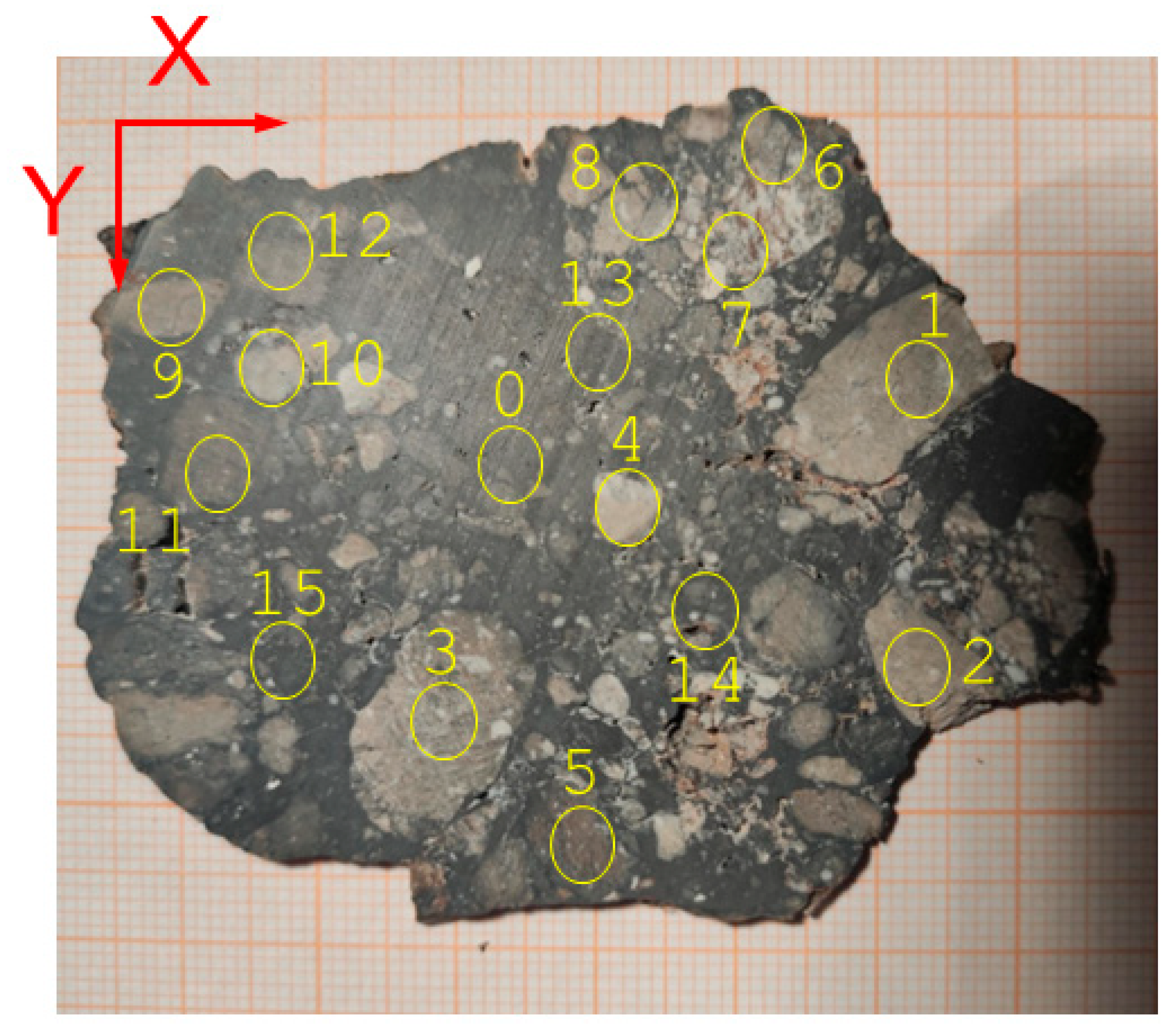

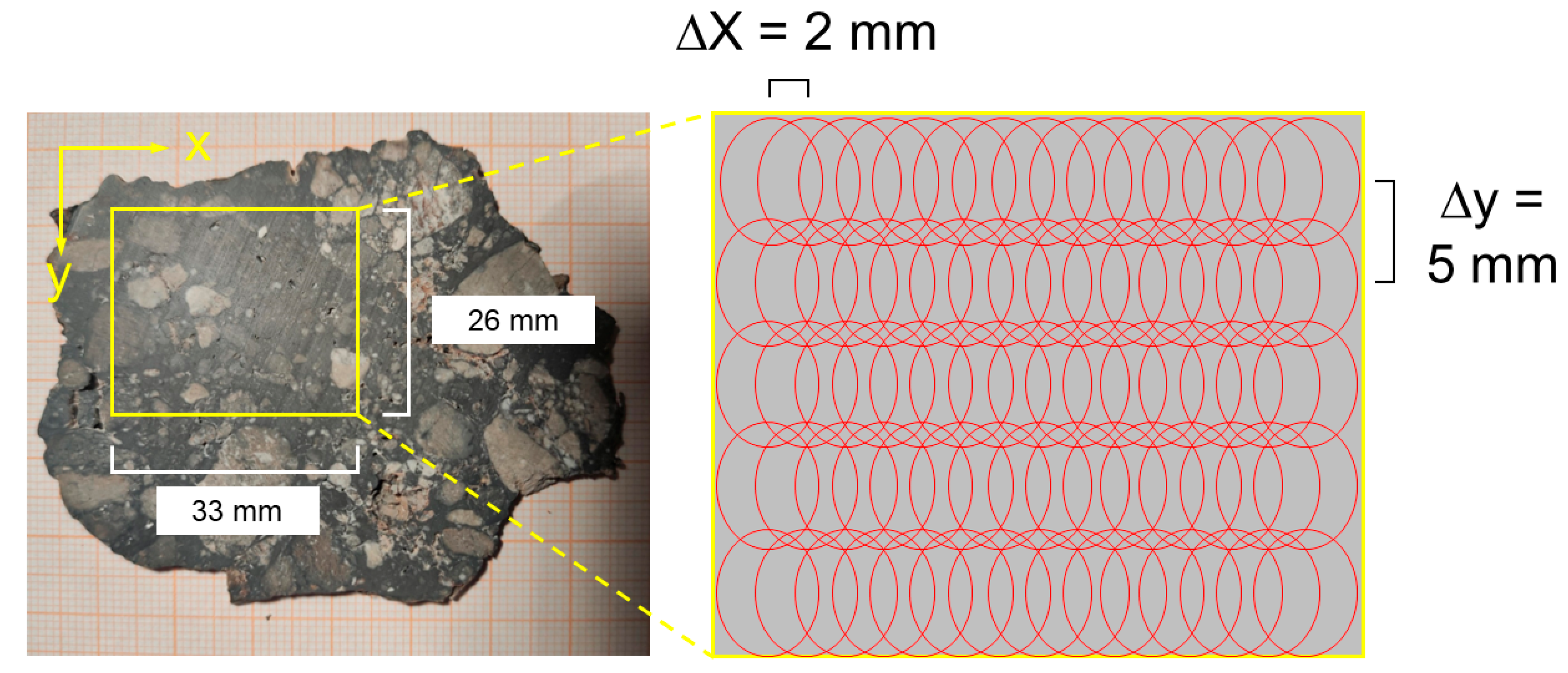
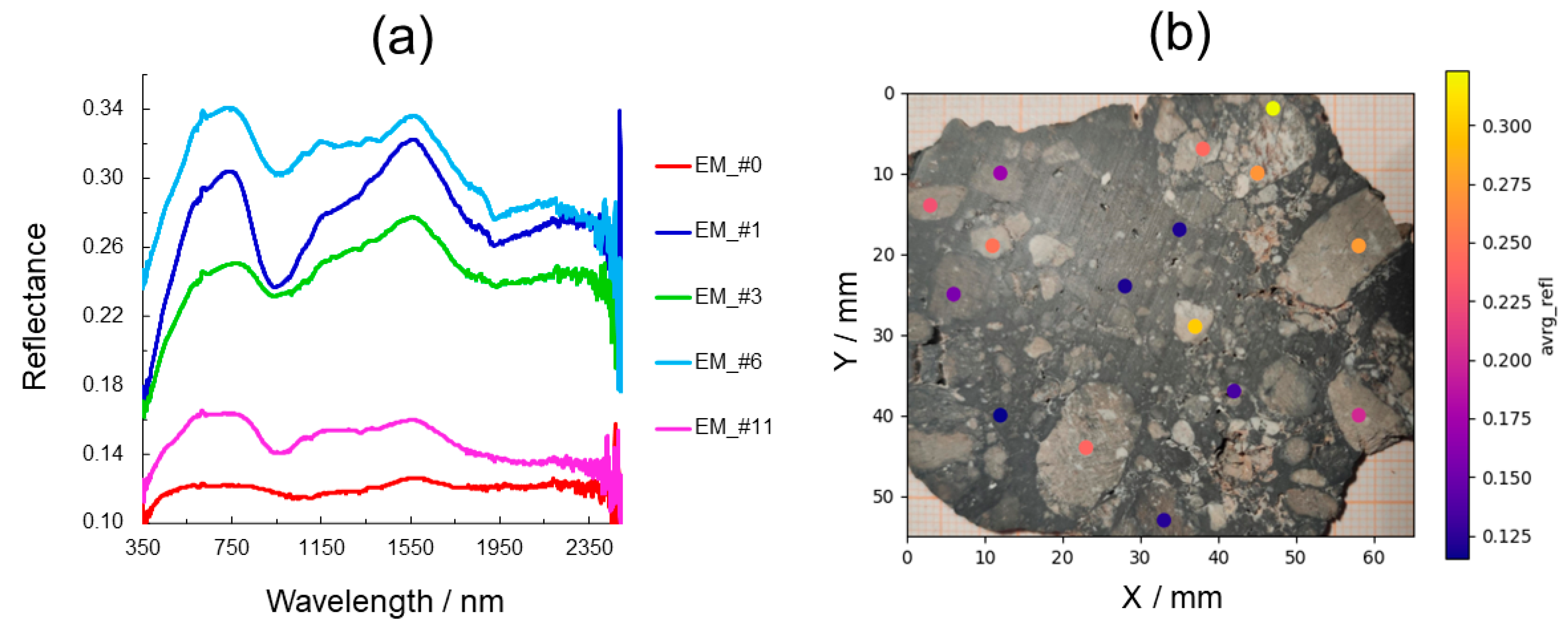
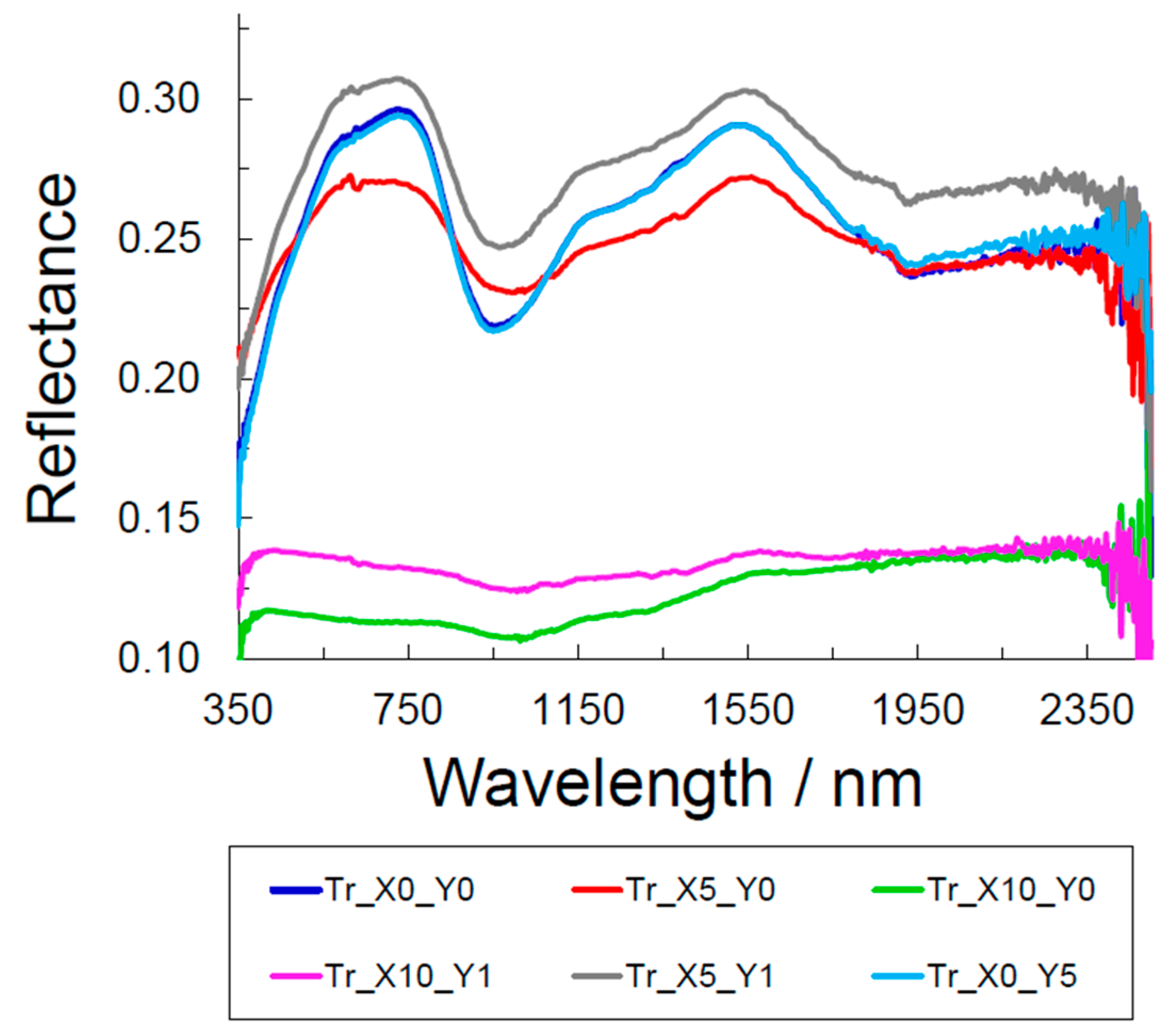
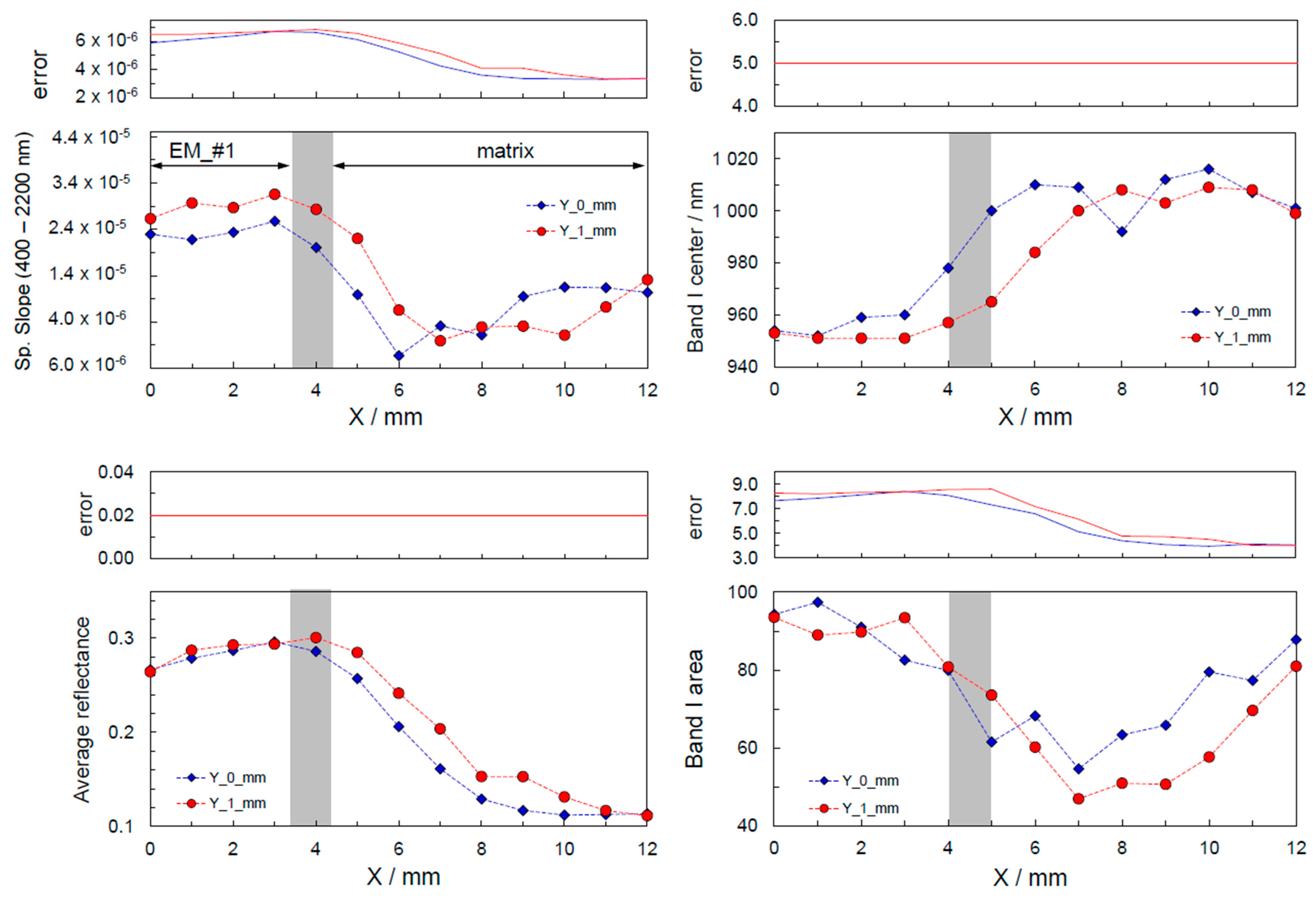
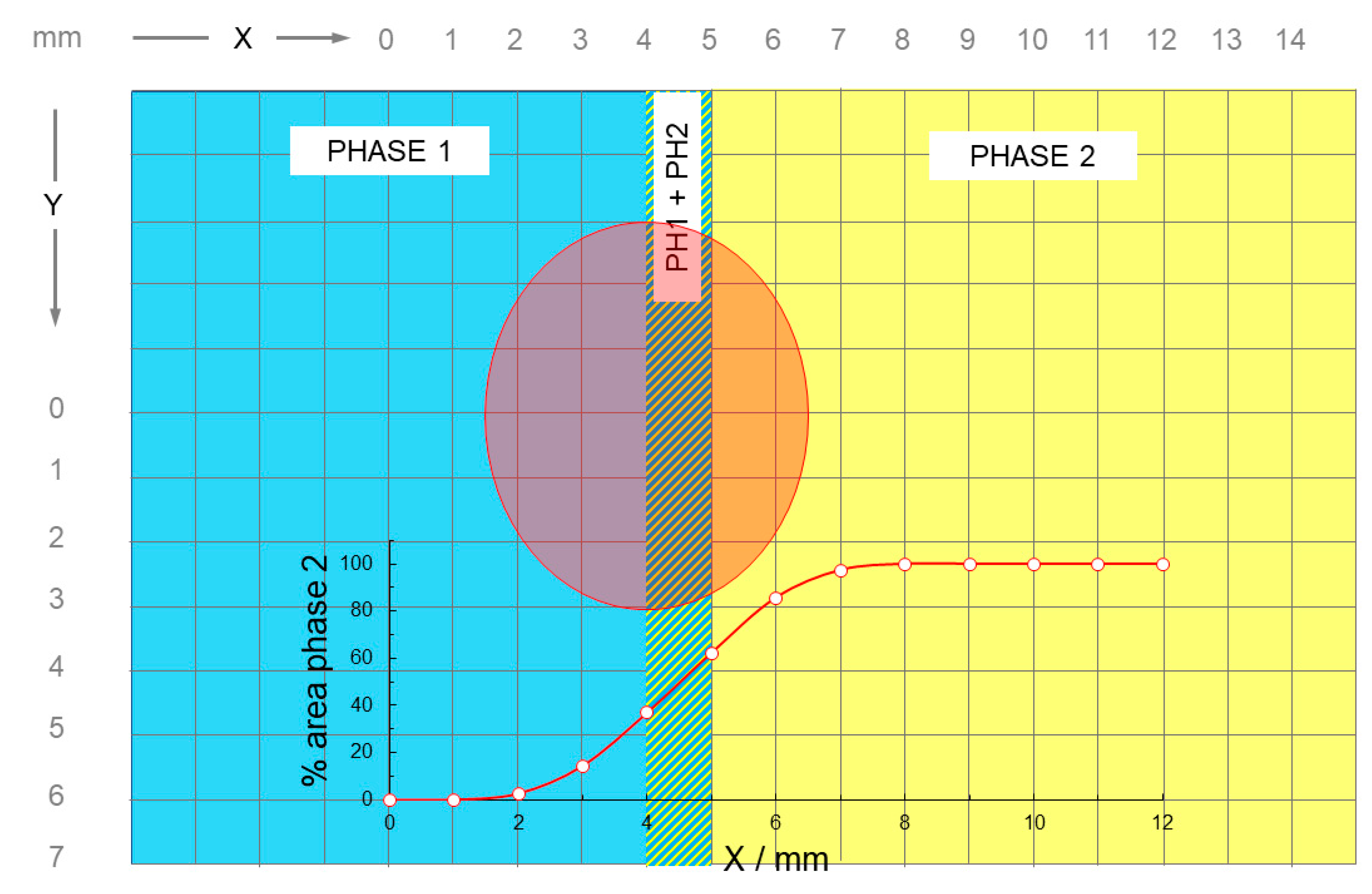

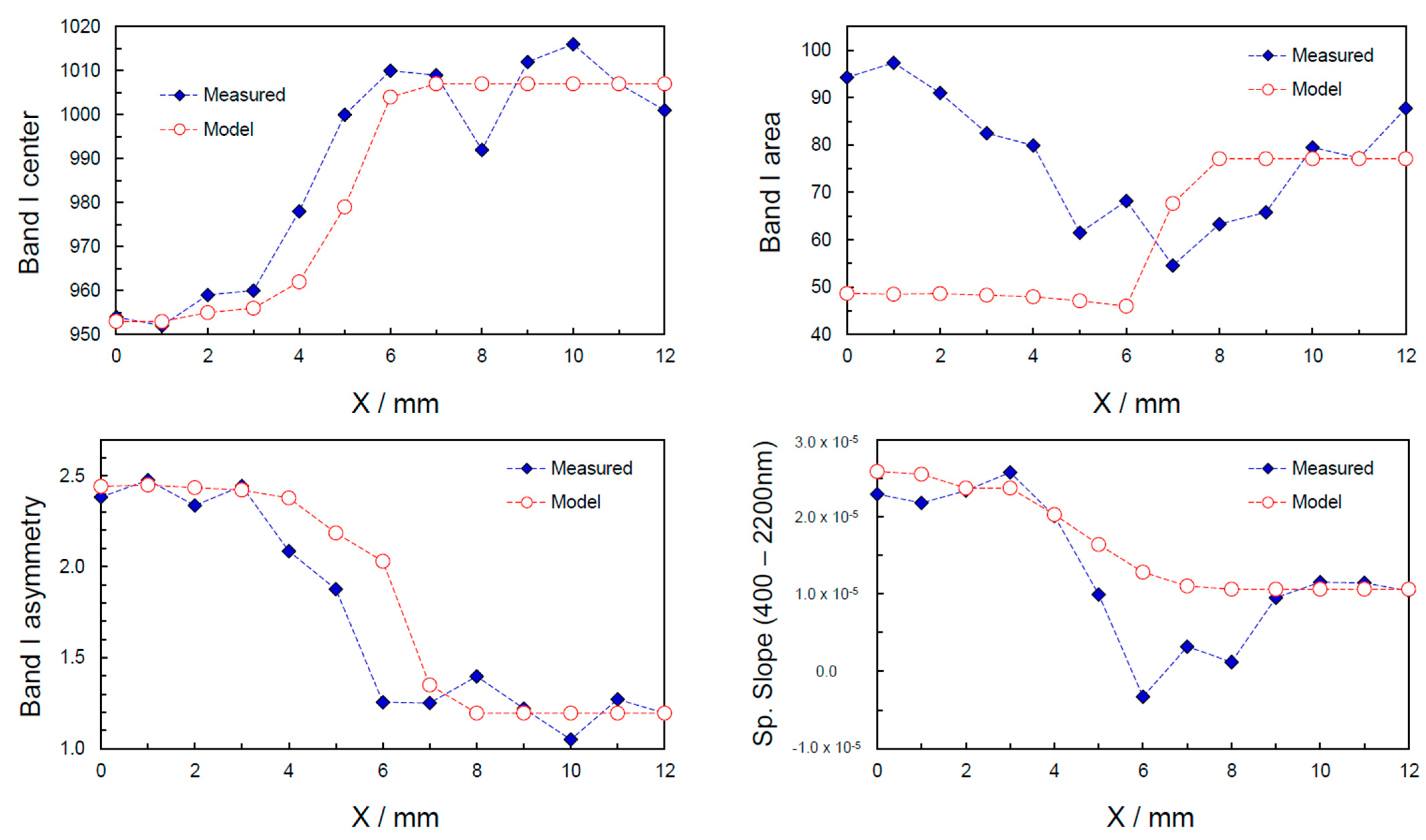
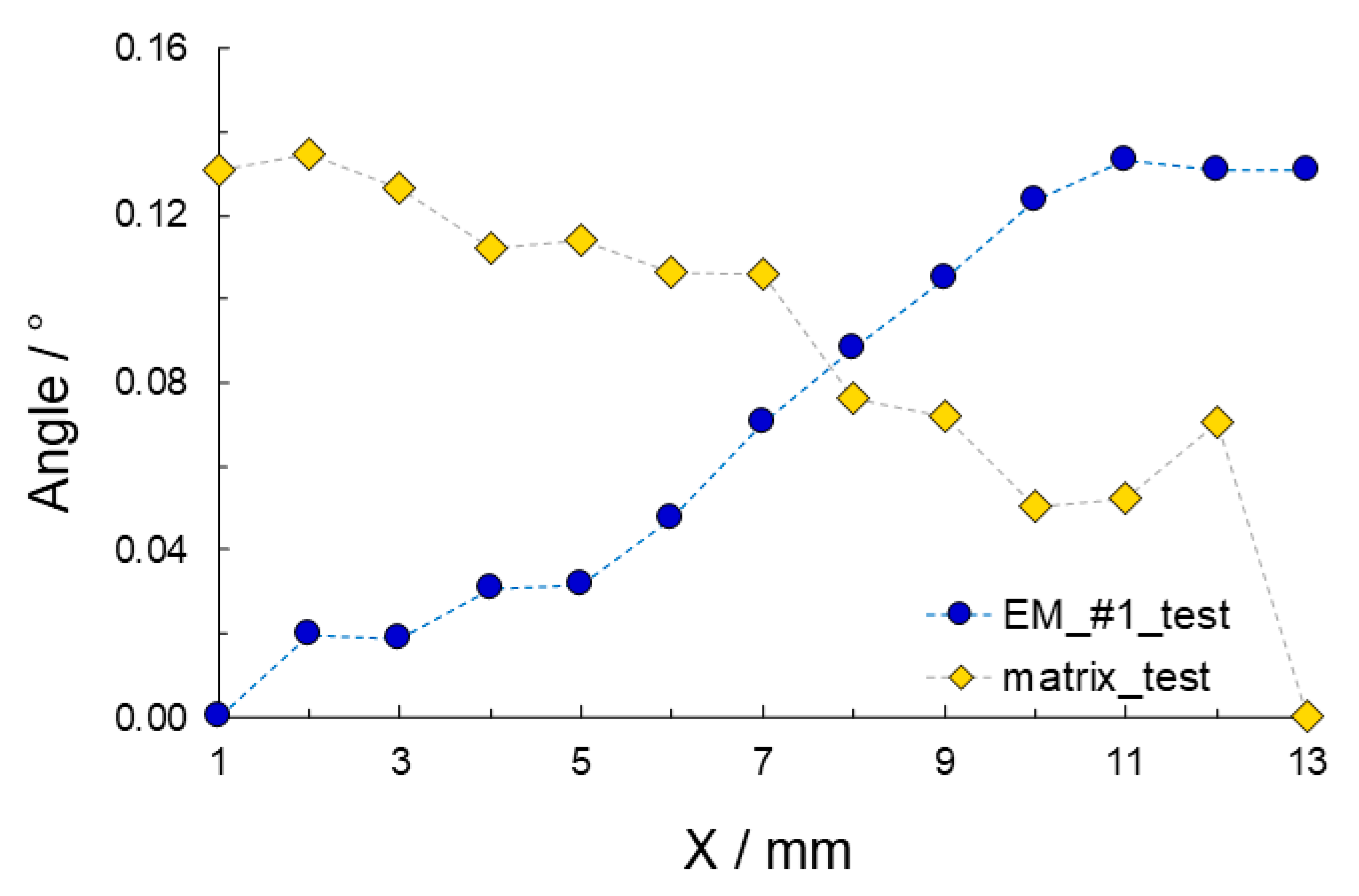
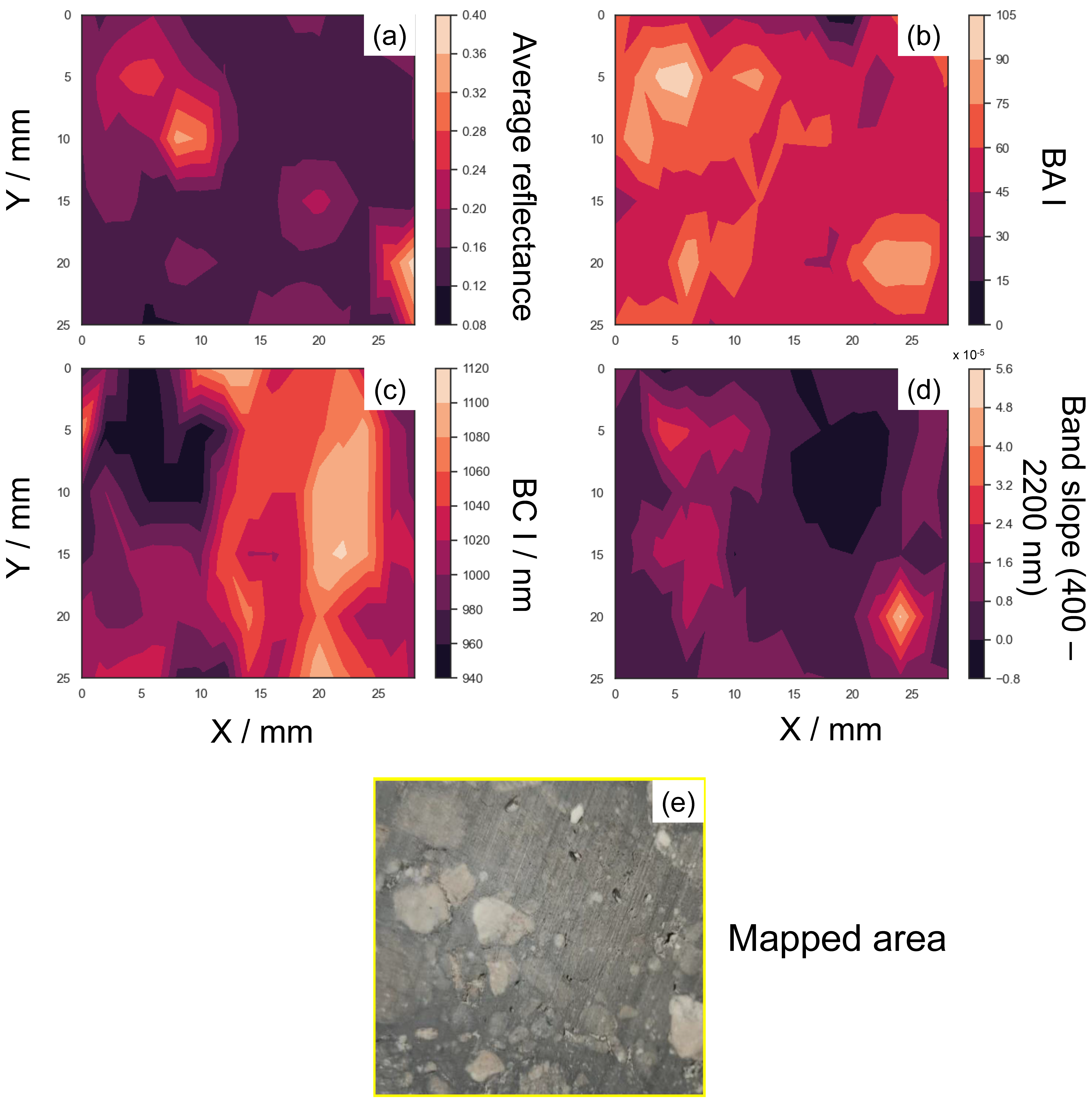
Disclaimer/Publisher’s Note: The statements, opinions and data contained in all publications are solely those of the individual author(s) and contributor(s) and not of MDPI and/or the editor(s). MDPI and/or the editor(s) disclaim responsibility for any injury to people or property resulting from any ideas, methods, instructions or products referred to in the content. |
© 2023 by the authors. Licensee MDPI, Basel, Switzerland. This article is an open access article distributed under the terms and conditions of the Creative Commons Attribution (CC BY) license (https://creativecommons.org/licenses/by/4.0/).
Share and Cite
Bruschini, E.; Carli, C.; Tosi, F. Mapping the Spectral and Mineralogical Variability of Lunar Breccia Meteorite NWA 13859 by VNIR Reflectance Spectroscopy. Minerals 2023, 13, 1000. https://doi.org/10.3390/min13081000
Bruschini E, Carli C, Tosi F. Mapping the Spectral and Mineralogical Variability of Lunar Breccia Meteorite NWA 13859 by VNIR Reflectance Spectroscopy. Minerals. 2023; 13(8):1000. https://doi.org/10.3390/min13081000
Chicago/Turabian StyleBruschini, Enrico, Cristian Carli, and Federico Tosi. 2023. "Mapping the Spectral and Mineralogical Variability of Lunar Breccia Meteorite NWA 13859 by VNIR Reflectance Spectroscopy" Minerals 13, no. 8: 1000. https://doi.org/10.3390/min13081000
APA StyleBruschini, E., Carli, C., & Tosi, F. (2023). Mapping the Spectral and Mineralogical Variability of Lunar Breccia Meteorite NWA 13859 by VNIR Reflectance Spectroscopy. Minerals, 13(8), 1000. https://doi.org/10.3390/min13081000





